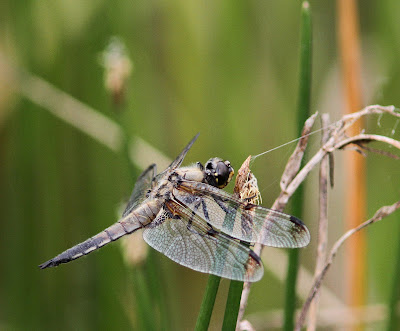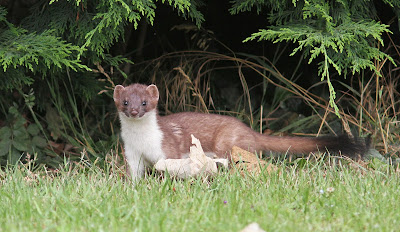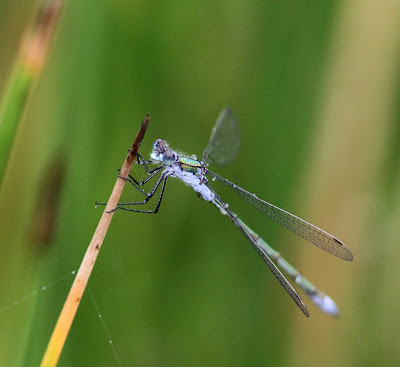Hello
A warm and sunny summer's day and much of it was taken up with a ringing session at Brixworth Water Treatment Works where a small team managed to catch and process 111 birds of 20 species.
Warblers completely dominated the session with 24 Chiffchaffs, 3 Willow Warblers, 11 Reed Warblers, 7 Sedge Warblers, 13 Blackcaps, 10 Common Whitethroats and singles of Garden Warbler and Lesser Whitethroat. Other birds included a Pied Wagtail, 3 Song Thrushes, 3 Magpies and singles of Reed Bunting and Yellowhammer. Five Grey Wagtails evaded the nets and a Kingfisher flew through.
Eleanor completed an early morning walk at Harrington Airfield this morning seeing the long-staying male Common Redstart, hearing a 'reeling' Grasshopper Warbler near Bunker One, and seeing a silent adult Cuckoo and 2 Crossbills and 4 Siskins flying over.
A Crossbill was heard flying over Brackley this morning and the Earls Barton Pits complex hosted a single Black-necked Grebe and a Dunlin on Summer Leys LNR and this evening a Spoonbill initially at Summer Leys and latterly at Hardwater Lake.
The Peregrine was again on it's church spire in Market Harborough town centre this fine evening.
Regards
Neil M
A warm and sunny summer's day and much of it was taken up with a ringing session at Brixworth Water Treatment Works where a small team managed to catch and process 111 birds of 20 species.
Warblers completely dominated the session with 24 Chiffchaffs, 3 Willow Warblers, 11 Reed Warblers, 7 Sedge Warblers, 13 Blackcaps, 10 Common Whitethroats and singles of Garden Warbler and Lesser Whitethroat. Other birds included a Pied Wagtail, 3 Song Thrushes, 3 Magpies and singles of Reed Bunting and Yellowhammer. Five Grey Wagtails evaded the nets and a Kingfisher flew through.
Eleanor completed an early morning walk at Harrington Airfield this morning seeing the long-staying male Common Redstart, hearing a 'reeling' Grasshopper Warbler near Bunker One, and seeing a silent adult Cuckoo and 2 Crossbills and 4 Siskins flying over.
A Crossbill was heard flying over Brackley this morning and the Earls Barton Pits complex hosted a single Black-necked Grebe and a Dunlin on Summer Leys LNR and this evening a Spoonbill initially at Summer Leys and latterly at Hardwater Lake.
The Peregrine was again on it's church spire in Market Harborough town centre this fine evening.
Regards
Neil M
 |
| The diminutive Chiffchaff, one of the most common birds ringed in the UK. Image courtesy of John Tilly. |
 |
| Sedge Warbler courtesy of Lynne Barnett. |
 |
| Common Whitethroat courtesy of Lynne Barnett. |















































